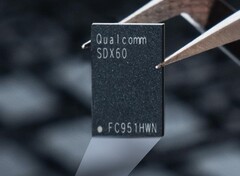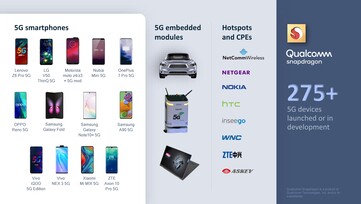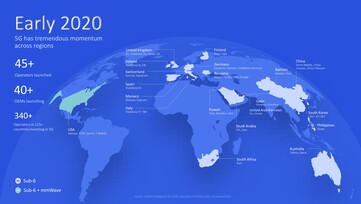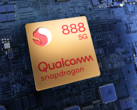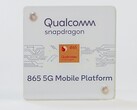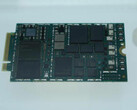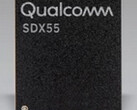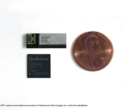Qualcomm has introduced the Snapdragon X60 5G modem-RF system to drive 5G adoption and offer flexibility for network operators and users. The Snapdragon X60 upgrades the capabilities of the currently available Snapdragon X55 5G modem that is found in most 5G devices today.
5G services are now wide but not unified
Qualcomm said that nearly 45 providers are now offering 5G but with nearly 10,000 tape combinations possible across the world, there is large disparity in the services offered. Some providers chose to opt for the high-performing mmWave frequencies while others seem to prefer the wider range of the sub 6-GHz spectrum even if it means sacrificing some speed. Also, not all phones seem to support all types of 5G networks. For example, in the recently announced Galaxy S20 series, only the Galaxy S20 Ultra and Galaxy S20+ support mmWave while the Galaxy S20 is limited to sub-6 GHz. Today's launch of the Snapdragon X60 should alleviate most of these concerns.
5G carrier aggregation is the future
The Snapdragon X60 is the first full-stack 5G modem to be made on TSMC's 5nm process. It offers enhanced aggregation capabilities that enable higher peak speeds within the available spectrum range; speeds can go up to 7.5 Gbps down and 3 Gbps up. The X60 supports simultaneous carrier aggregation of 5G mmWave and sub-6 GHz. It can also do sub-6 GHz aggregation across FDD and TDD network types (FDD and FDD, FDD and TDD, or TDD and TDD). This enables operators to maximize spectrum usage and capacity by combining the high performance of mmWave frequencies and the wide-range capability of sub-6 GHz frequencies. This is also a boon for users, who can now can roam freely across countries without having to worry about 5G band support.
The Snapdragon X60 is also the first fully standalone chipset to support Voice over New Radio. This eliminates the need to fallback over to 4G for voice.
QTM535 antenna and the new ultraSAW filter
Qualcomm's first 5G NR antennas, the QTM052 and QPM56xx, were designed to cater for mmWave and sub-6 GHz, respectively and they worked in tandem with the Snapdragon X50 modem. Then, at IFA 2019, Qualcomm introduced the QTM527 antenna that brought 5G fixed wireless access (FWA) capabilities with support for beamforming, beam steering, and beam tracking.
Now, Qualcomm is introducing the QTM535 antenna featuring a 3rd gen mmWave module offered in combination with the Snapdragon X60 modem (hence the 5G modem-RF system moniker). Qualcomm's slides did not provide information on how small the QTM535 would be in comparison to the previous generation but did say that that it is "narrower" to enable sleek devices.
The QTM535 supports global mmWave frequencies including 26 GHz, 28 GHz, and 39 GHz, which should effectively cover North America, Korea, Japan, Europe, and Australia.
The QTM535 uses the ultraSAW (surface acoustic wave) filter technology that is touted to better isolate and process RF signals from different frequencies ranging from 600 MHz to 2.7 GHz compared to existing BAW (bulk acoustic wave) filters. ultraSAW has a quality factor of 5000 and is integrated across Qualcomm's entire lineup from modem to antennas.
Qualcomm did not offer any timeline for the Snapdragon X60 availability but taking TSMC's current production capabilities into account, we expect improved 5nm yields only sometime in 2021 although OEMs are likely to sampled with these modems later this year. We should be able to know more during the company's annual Tech Summit come December.
Check out slides from Qualcomm's briefing below.
Source(s)
Qualcomm Briefing




